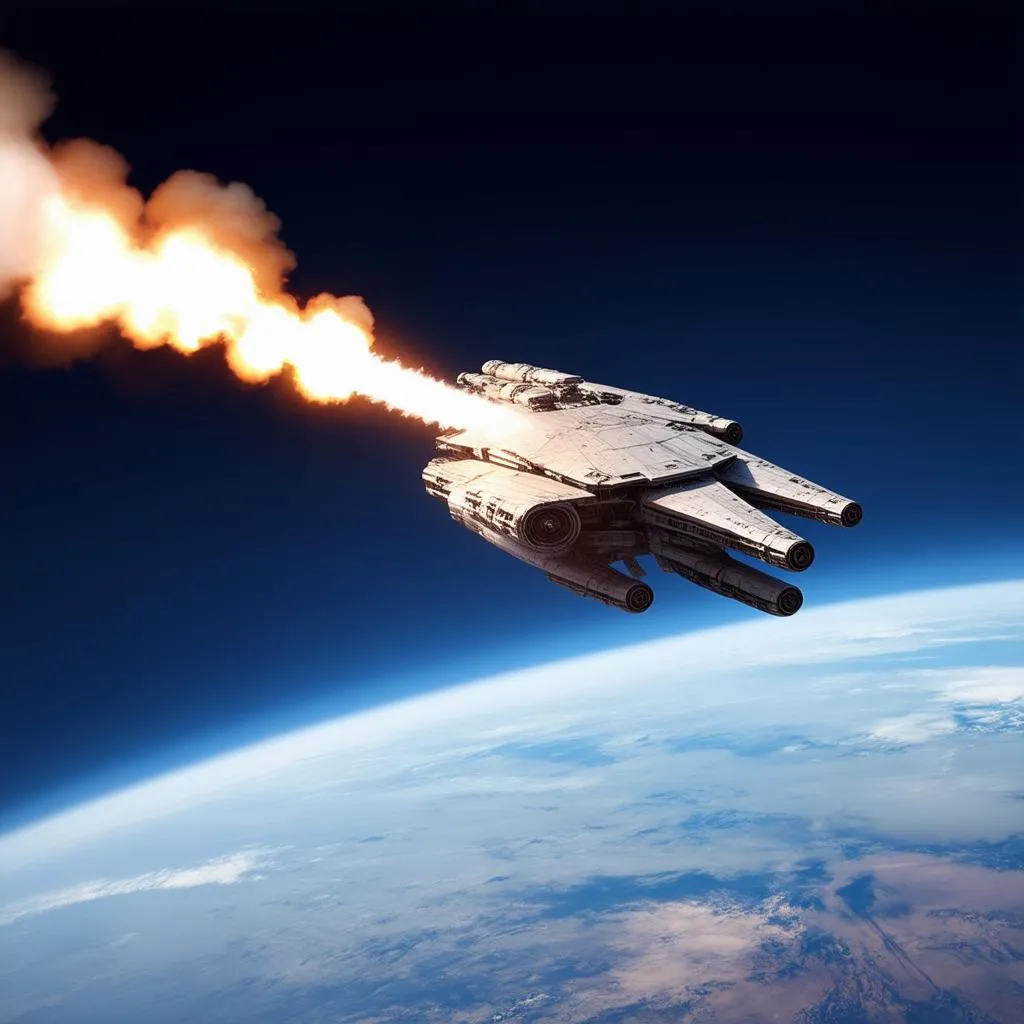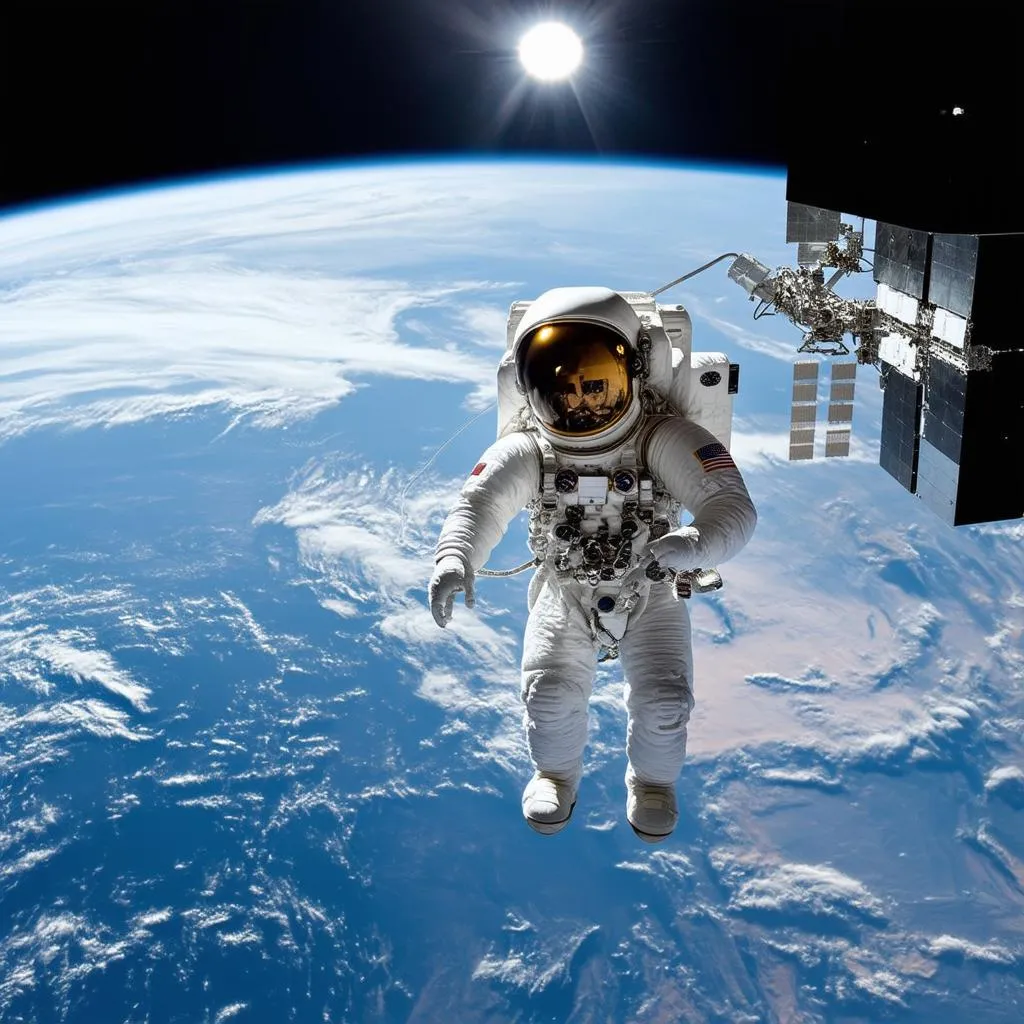Have you ever gazed up at the night sky, mesmerized by the twinkling stars, and wondered, “How fast do those spaceships actually go?”. The vastness of space and the incredible speeds involved in traversing it have captivated humanity for centuries. It’s a question that sparks the imagination and ignites a thirst for knowledge about the cosmos and our place within it.
Reaching for the Stars: A Look at Spaceship Velocity
Unlike a casual Sunday drive, space travel is anything but leisurely. To escape Earth’s gravitational pull, spaceships need to achieve mind-boggling speeds. The minimum speed required, known as escape velocity, is about 7 miles per second (25,000 mph or 40,000 km/h)! That’s over 30 times faster than the speed of sound!
However, achieving escape velocity is only the first step. The actual speed of a spaceship depends on several factors, including:
- Destination: A trip to the International Space Station, orbiting Earth, requires a different speed than a mission to Mars or beyond.
- Trajectory: Just like taking a shortcut on your way to work, spaceships often use the gravitational pull of planets to slingshot themselves towards their destination, affecting their speed.
- Propulsion system: The type of engine and fuel used plays a crucial role in determining how fast a spaceship can go.
For instance, the Apollo missions, which took humans to the moon, reached speeds of around 25,000 mph. Meanwhile, the Parker Solar Probe, designed to “touch” the Sun, has achieved a mind-blowing speed of over 466,000 mph!
Breaking Down the Science: Factors Influencing Spaceship Speed
1. Gravity: The Ultimate Speed Bump
Imagine trying to ride your bike uphill; it takes more effort, right? Similarly, a spaceship battling against Earth’s gravity requires immense power and speed. Once it escapes this gravitational pull, it can cruise at a more constant velocity.
2. Propulsion Systems: Fueling the Journey
Different missions call for different engines. Chemical rockets, like those used in the Space Shuttle program, provide high thrust but are limited in fuel efficiency. Ion propulsion, used by spacecraft like Dawn, provides a smaller but continuous thrust, allowing for gradual acceleration over extended periods.
3. Slingshot Maneuvers: A Cosmic Game of Billiards
Just like a well-aimed shot in billiards, spaceships can use the gravitational pull of planets to alter their speed and trajectory. This technique, known as a gravity assist, allows for significant fuel savings and enables missions to reach distant targets more efficiently.
 Spaceship Launch
Spaceship Launch
Beyond Speed: The Future of Space Travel
While current spaceship speeds are impressive, scientists and engineers are constantly pushing the boundaries of space exploration. Concepts like warp drives, antimatter propulsion, and even wormholes are being explored as potential avenues for achieving faster-than-light travel.
FAQs About Spaceship Speed
Q: Why do spaceships need to travel so fast?
A: To overcome Earth’s gravity and reach their destinations in a reasonable timeframe. Imagine taking a car trip to the moon; even at high speeds, it would take months!
Q: What is the fastest spaceship ever built?
A: Currently, that title belongs to the Parker Solar Probe, which has reached speeds exceeding 466,000 mph.
Q: Could we ever travel faster than the speed of light?
A: While theoretically possible according to Einstein’s theory of relativity, achieving faster-than-light travel poses significant technological and scientific challenges that we have yet to overcome.
Exploring the Universe: A Never-Ending Journey
From the early days of Sputnik to the ambitious missions planned for the future, our quest to unravel the mysteries of the universe is intrinsically linked to our ability to travel through space. While we haven’t quite achieved the warp speeds of science fiction just yet, the incredible advancements in spaceship technology continue to push the limits of what’s possible, allowing us to venture further and explore the cosmos like never before.
 Astronaut on Spacewalk
Astronaut on Spacewalk
Interested in learning more about the wonders of space travel? Check out these related articles:
Do you have other burning questions about space exploration? Share your thoughts in the comments below!